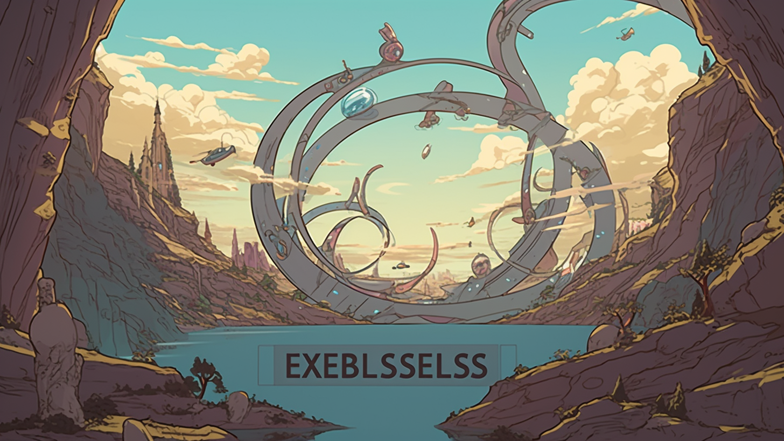
The concept of time travel has been a popular trope in science fiction for decades. From H.G. Wells’ The Time Machine to the 2014 blockbuster Interstellar and beyond, writers have been captivated by the idea of humans venturing through the temporal fabric of the universe. However, an even more popular, albeit lesser-discussed, trope in sci-fi is the temporal loop. In temporal loop stories, the characters are trapped in a recurring cycle of time, often reliving the same day or event over and over again. This article delves into the popular science fiction trope of temporal loops and examines the different ways it has been used in various TV shows, movies, and literature to raise philosophical questions about free will and the nature of existence.
The first significant example of a temporal loop in science fiction can be dated back to the 1962 short story, “Yesterday Was Monday” by Theodore Sturgeon. In this tale, the lead character lives through the same day twice, and each iteration is slightly different, albeit still identically mundane. However, it was not until the 1993 movie Groundhog Day, directed by Harold Ramis, that the genre hit mainstream audiences. The movie became an instant classic, inspiring countless copycat films and TV episodes, including Edge of Tomorrow (2014) and episodes of Stargate SG-1, Supernatural, and Fringe, just to name a few.
The Groundhog Day formula - a character reliving the same day and seeking ways to break the loop - was so successful that it is still used by writers to this day. For instance, the Netflix movie Palm Springs (2020) and the latest installment of the horror movie franchise, Happy Death Day to You (2019), both use variations of the trope in almost identical ways.
While the Groundhog Day trope is entertaining, it raises some intriguing philosophical ideas. The dominant question is: if a person is reliving the same day repeatedly, does free will even exist? In other words, would every decision the person makes be predetermined if they repeat the same day over and over again? This question is indirectly considered in Groundhog Day and Happy Death Day to You, where the lead characters ultimately change the course of events by taking specific actions. However, it is not clear in these stories if the characters’ choices are solely autonomous ones or if there is divine intervention at play.
A more recent example of a temporal loop story that explicitly explores the topic of free will is the critically acclaimed TV series Russian Doll (2019). This Netflix series digs deeper into the philosophy of the Groundhog Day trope, with the lead character in the story fully aware that she is reliving the same day. She goes through several cycles of time loops, each time making different choices. However, her decisions do not break the loop, but rather lead to other versions of her going through different paths that lead to the same inevitable consequences.
Russian Doll’s take on the Groundhog Day paradox speaks to a more existential idea about the nature of existence. If time is not linear, and we are all reliving the same experience repeatedly, living may feel too cyclical and pointless as the desire for growth and evolution becomes impossible. It is an idea explored in depth in Ari Aster’s movie Midsommar (2019), which sees a character put through a traumatic experience whose consequences repeat unresolvedly again and again.
One other interpretation of the temporal loop trope is that it is a way for characters to fully explore choices and contemplate the far-reaching outcomes of their decisions. In the 2004 Japanese movie All About Lily Chou-Chou, the protagonist’s school life is disrupted when he is assaulted by a group of delinquents. However, after one of the students is killed in a car accident, the protagonist is sent back to the day before the tragedy. The student proceeds to relive the days leading up to the assault repeatedly, allowing him to interact with different characters involved and see the hidden motivations behind their behaviors. The time loops ultimately lead him to understand why events happened as they did, leading to a cathartic release.
The use of temporal loops can also allow for some great storytelling opportunities. In many science fiction stories, they are used as a device to build tension and create suspense as characters have to figure out how to escape the loops. In the popular animated series Rick and Morty, for instance, the character Morty ends up creating a time loop in which he and his sister are slowly drifting apart, but each time they try to reconcile, they end up stuck in the palace where they met, losing track of time. The episode’s twist is that their father, who is blinded by grief and guilt, is the one preventing the siblings from leaving the loop, emphasizing the idea that escaping a temporal loop often leads the character to a more profound understanding of themselves or someone else.
In conclusion, temporal loops are increasingly becoming a popular trope in science fiction, used in movies, TV shows, and literature to explore complex philosophical issues such as free will, identity, and purpose. This trope allows writers and audiences to consider what it means to be human in a universe where time is usually considered deterministic, with little room for altering the course of events. However, the temporal loop trope’s most significant philosophical significance is that it raises the possibility of what it means to break free from the accepted conventions of our lives - such as following a particular career, getting married, or having children - and embracing the possibility of something new, creative and transformative.
Comments
Post a Comment